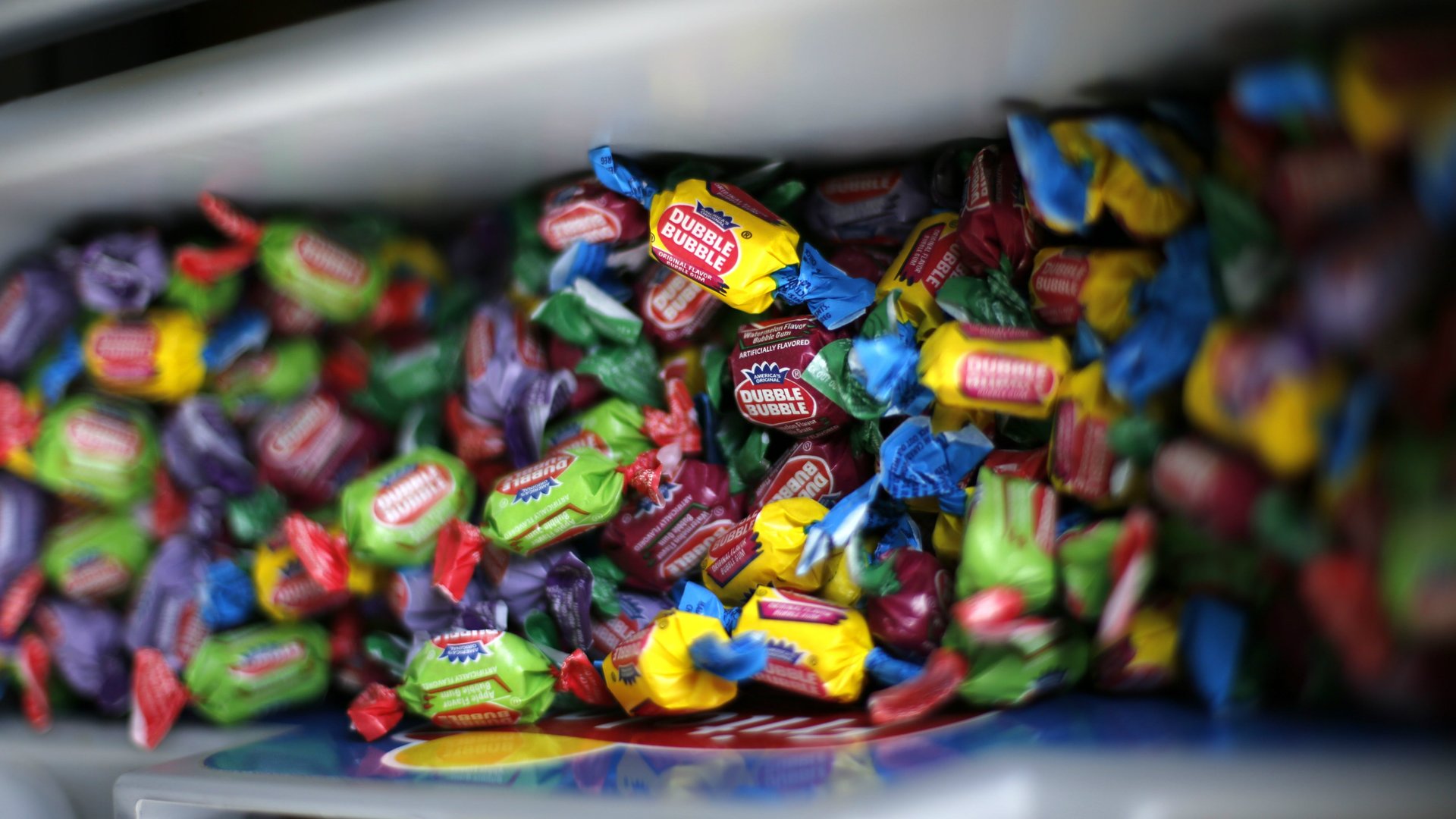The online groceries trend is coming at a vulnerable time for gum and candy companies
The introduction of self-checkout lanes to American supermarkets 25 years ago created a big problem for confectionary companies. That’s because the lanes lack shelving for impulse purchases like the bubble gum, mints, and candy bars that typically line the cashier aisles.


The introduction of self-checkout lanes to American supermarkets 25 years ago created a big problem for confectionary companies. That’s because the lanes lack shelving for impulse purchases like the bubble gum, mints, and candy bars that typically line the cashier aisles.
“It’s a huge loss,” a Hershey’s executive said at the 2014 Food Marketing Institute’s annual conference in Chicago. “We’ve done a number of studies. It’s billions of dollars since self-checkout started in 1992.”
Just wait until more checkout lanes start disappearing all together.
As Americans shift to online grocery shopping in bigger numbers, spurred on by the ambitions of major sellers like Amazon, confectionary treats will be out of physical reach, unable to entice shoppers or their nagging children with alluring, technicolor packaging. The prospect already has Hershey’s and its industry brethren working to figure out ways to sell more candy online. Other companies in the packaged-food business, like Campbell Soup Co., are trying to be similarly strategic.
It’s not a great time for more disruption in candy. Bubble gum sales have declined by more than 40% in the last decade, to $250 million in 2016, according to Euromonitor. The market for chewing gum, in general—which includes bubble gum, mint gums, and sugar-free varietes—sits at $3 billion, down more than 8% over the past decade.
Of course, the shift to online shopping isn’t likely to stop marketers from trying to get shoppers to make impulse purchases, says Phil Lempert, an independent grocery-industry analyst. As companies use technology to learn more about consumer shopping habits, expect those sweet-treat temptations to come in a different form.
“What we’re starting to see,” Lempert says, “is that…when you’re done with your [online] checkout experience, the little pop-up impulse is going to be there.”